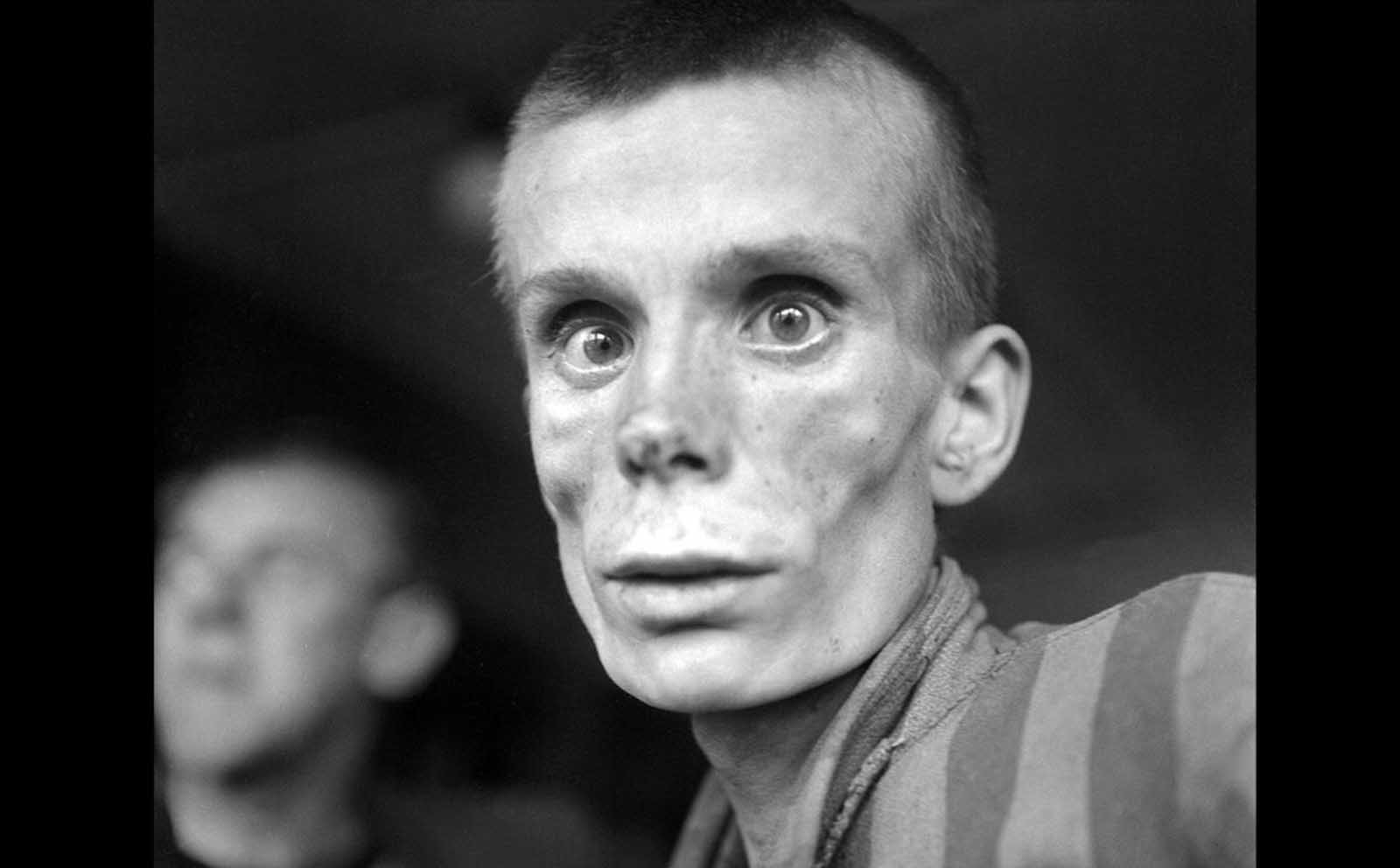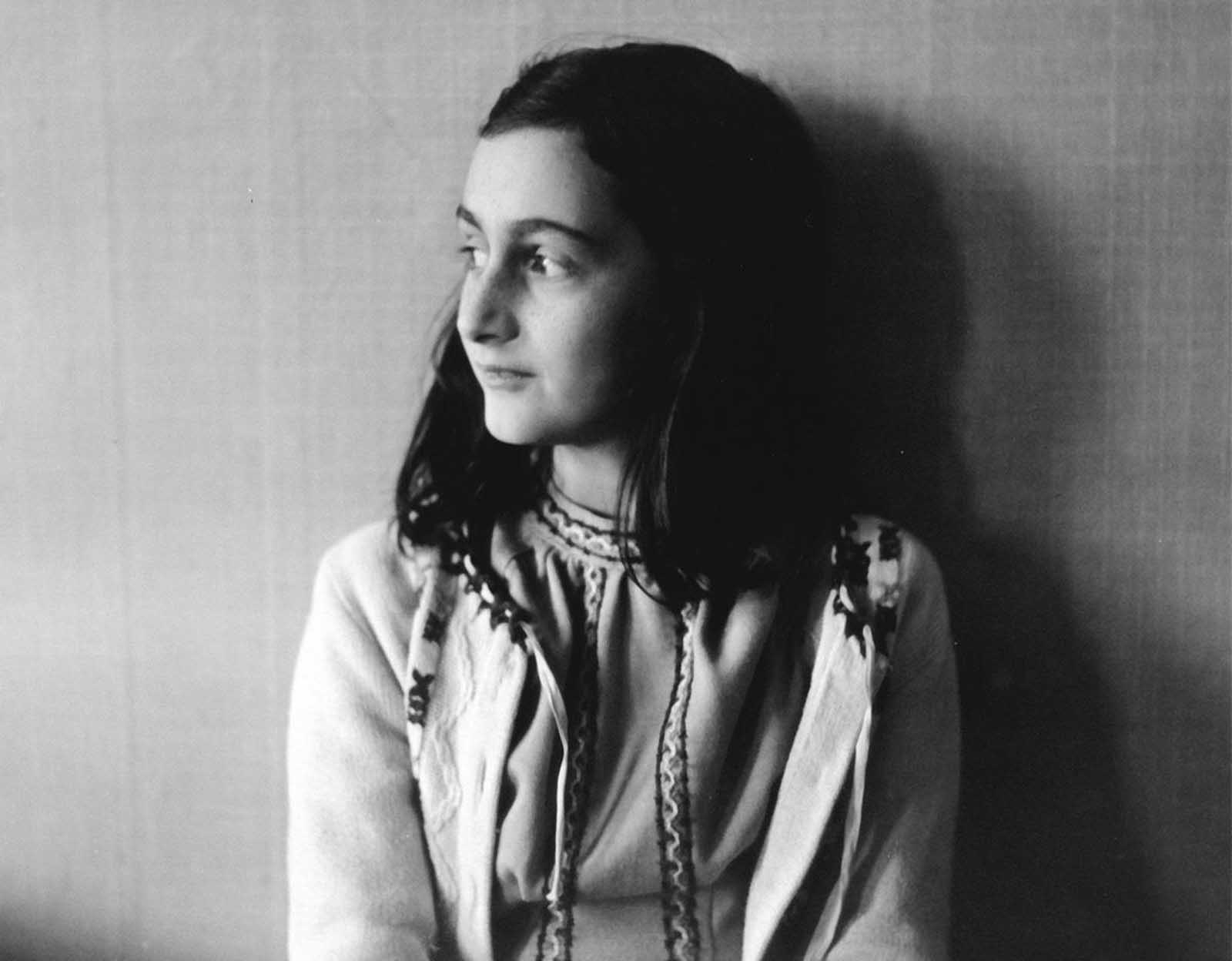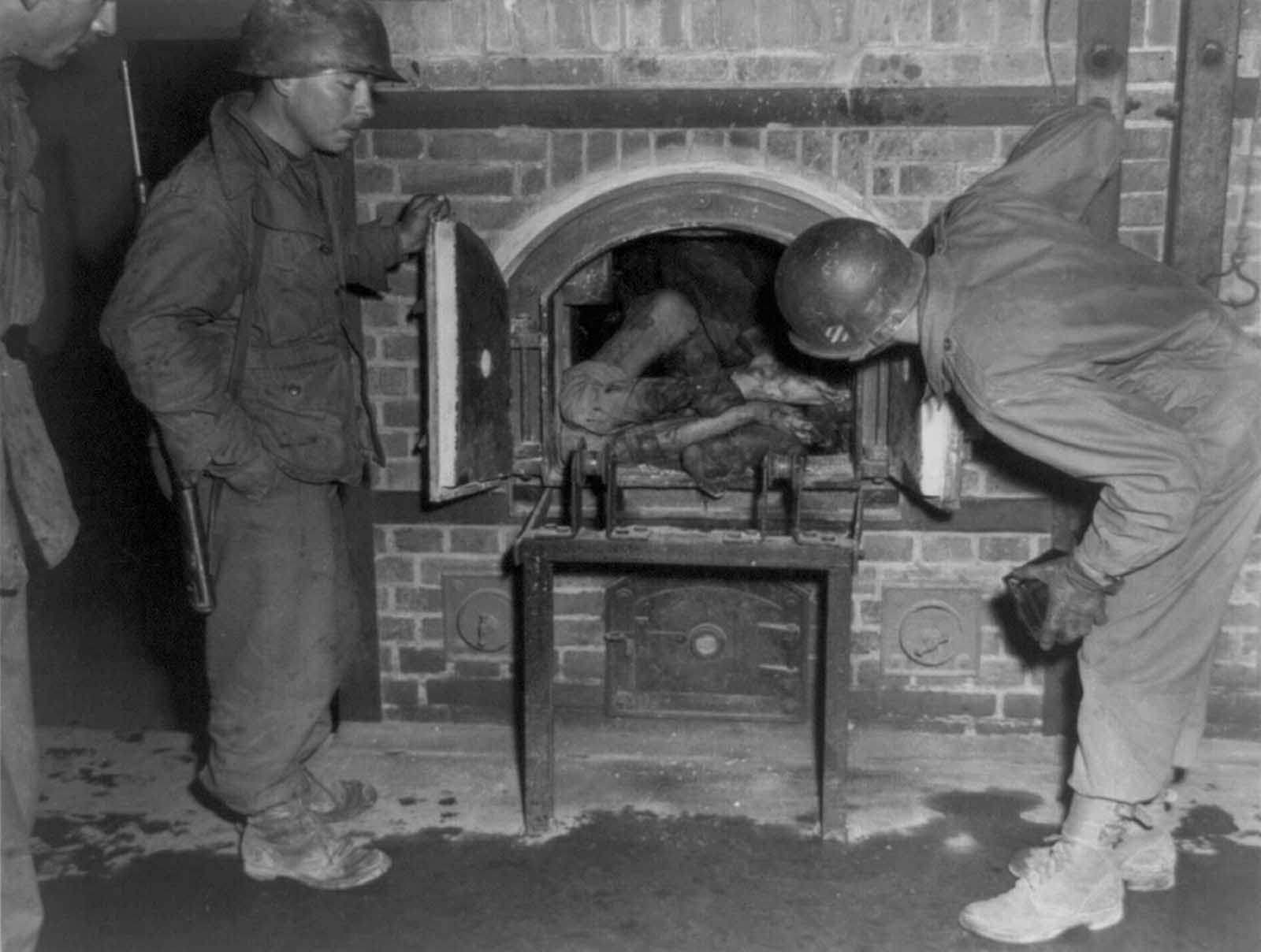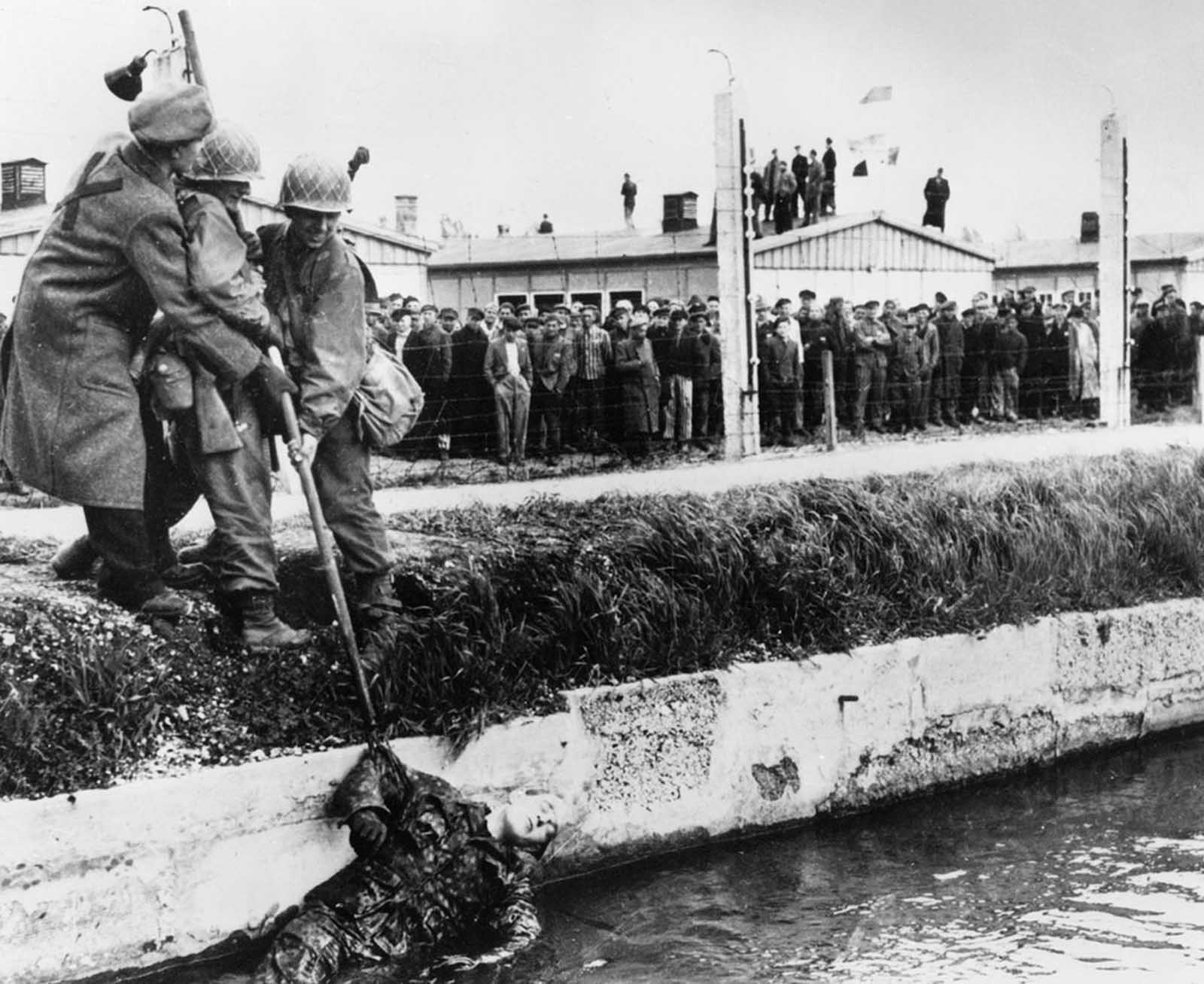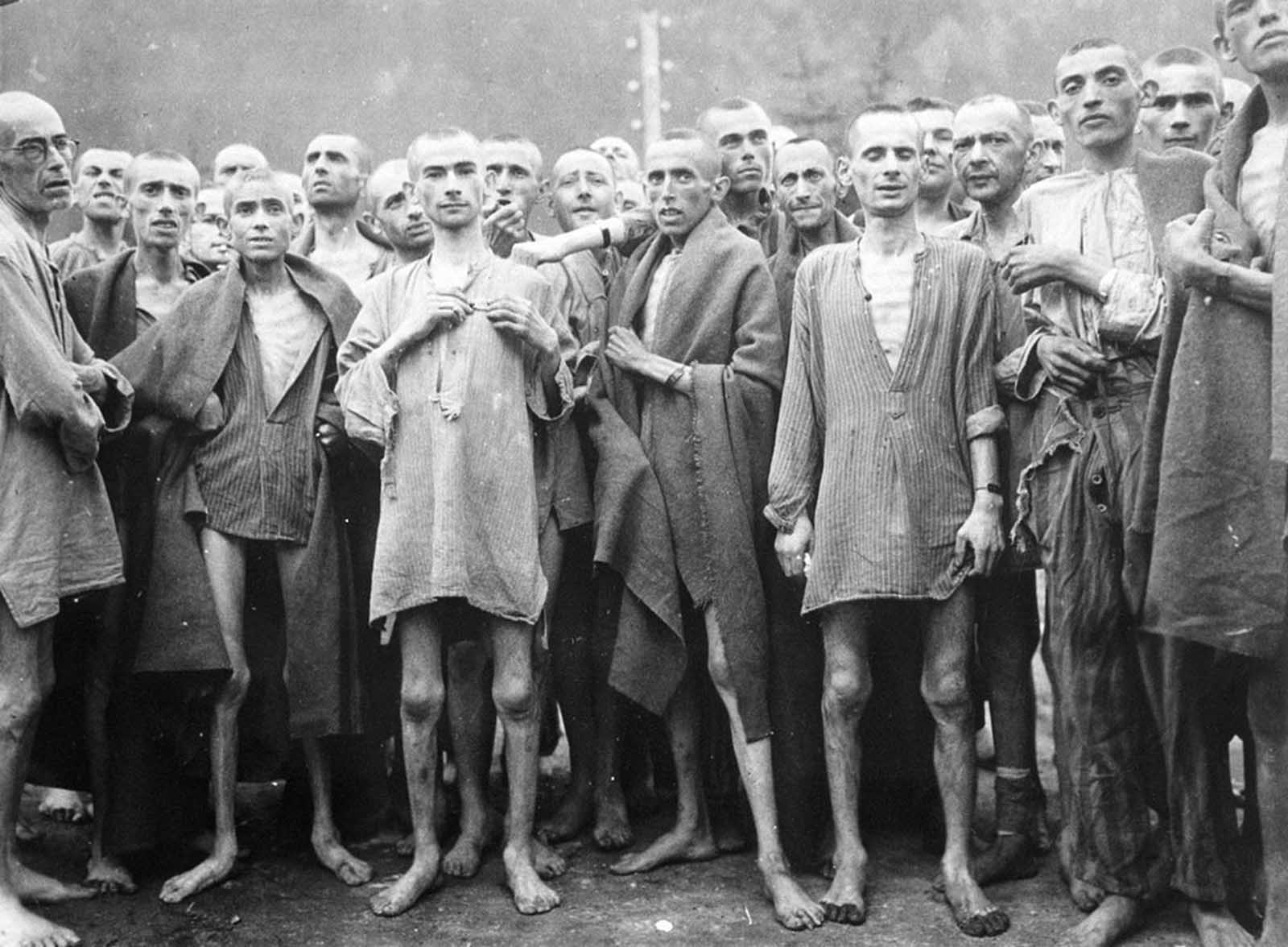It began with a simple boycott of Jewish shops and ended in the gas chambers at Auschwitz as Nazi Germany attempted to exterminate the entire Jewish population of Europe. In January 1933, after a bitter ten-year political struggle, Adolf Hitler came to power in Germany. During his rise to power, Hitler had repeatedly blamed the Jews for Germany’s defeat in World War I and subsequent economic hardships. Jews at this time composed only about one percent of Germany’s population of 55 million persons. German Jews were mostly cosmopolitan in nature and proudly considered themselves to be Germans by nationality and Jews only by religion. They had lived in Germany for centuries, fought bravely for the Fatherland in its wars, and prospered in numerous professions. But they were gradually shut out of German society by the Nazis through a never-ending series of laws and decrees, culminating in the Nuremberg Laws of 1935 which deprived them of their German citizenship and forbade intermarriage with non-Jews. They were removed from schools, banned from the professions, excluded from military service, and were even forbidden to share a park bench with a non-Jew. In March 1938, Hitler expanded the borders of the Nazi Reich by forcibly annexing Austria. A brutal crackdown immediately began on Austria’s Jews. They also lost everything and were even forced to perform public acts of humiliation such as scrubbing sidewalks clean amid jeering pro-Nazi crowds. Back in Germany, years of pent-up hatred toward the Jews was finally let loose on the night that marks the actual beginning of the Holocaust. The Night of Broken Glass (Kristallnacht) occurred on November 9/10 after 17-year-old Herschel Grynszpan shot and killed Ernst vom Rath, a German embassy official in Paris, in retaliation for the harsh treatment his Jewish parents had received from Nazis. Spurred on by Joseph Goebbels, Nazis used the death of vom Rath as an excuse to conduct the first State-run pogrom against Jews. Ninety Jews were killed, 500 synagogues were burned and most Jewish shops had their windows smashed. The first mass arrest of Jews also occurred as over 25,000 men were hauled off to concentration camps. The Second World War began in September 1939 as German troops stormed into Poland, a country that was home to over three million Jews. After Poland’s quick defeat, Polish Jews were rounded up and forced into newly established ghettos at Lodz, Krakow, and Warsaw, to await future plans. Inside these overcrowded walled-in ghettos, tens of thousands died a slow death from hunger and disease amid squalid living conditions. The ghettos soon came under the jurisdiction of Heinrich Himmler, leader of the Nazi SS, Hitler’s most trusted and loyal organization, composed of fanatical young men. In the spring of 1940, Himmler ordered the building of a concentration camp near the Polish city of Oswiecim, renamed Auschwitz by the Germans, to hold Polish prisoners and to provide slave labor for new German-run factories to be built nearby. Meanwhile, Hitler continued his conquest of Europe, invading Belgium, Holland, Luxembourg, and France, placing ever-increasing numbers of Jews under Nazi control.
The Nazis then began carefully tallying up the actual figures and also required Jews to register all of their assets. But the overall question remained as to what to do with the millions of Jews now under Nazi control – referred to by the Nazis themselves as the Judenfrage (Jewish question). The following year, 1941, would be the turning point. In June, Hitler took a tremendous military gamble by invading the Soviet Union. Before the invasion, he had summoned his top generals and told them the attack on Russia would be a ruthless “war of annihilation” targeting Communists and Jews and that normal rules of military conflict were to be utterly ignored. Inside the Soviet Union were an estimated three million Jews, many of whom still lived in tiny isolated villages known as Shtetls. Following behind the invading German armies, four SS special action units known as Einsatzgruppen systematically rounded up and shot all of the inhabitants of these Shtetls. Sometimes the Einsatz execution squads were aided by local anti-Semitic volunteers.
At Auschwitz-Birkenau, new arrivals were told to carefully hang their clothing on numbered hooks in the undressing room and were instructed to remember the numbers for later. They were given a piece of soap and taken into the adjacent gas chamber disguised as a large shower room. In place of carbon monoxide, pellets of the commercial pesticide Zyklon-B (prussic acid) were poured into openings located above the chamber. The gas pellets fell into hollow shafts made of perforated sheet metal and vaporized upon contact with air, giving off lethal cyanide fumes inside the chamber which oozed out at floor level then rose up toward the ceiling. Children died first since they were closer to the floor. Pandemonium usually erupted as the bitter almond-like odor of the gas spread upwards with adults climbing on top of each other forming a tangled heap of dead bodies all the way up to the ceiling. During the summer of 1941, SS leader Heinrich Himmler summoned Auschwitz Commandant Rudolf Höss to Berlin and told him: “The Führer has ordered the Final Solution of the Jewish question. We, the SS, have to carry out this order…I have therefore chosen Auschwitz for this purpose”. At Auschwitz, a large new camp was already under construction to be known as Auschwitz II (Birkenau). This would become the future site of four large gas chambers to be used for mass extermination. The idea of using gas chambers originated during the Euthanasia Program, the so-called “mercy killing” of sick and disabled persons in Germany and Austria by Nazi doctors. By now, experimental mobile gas vans were being used by the Einsatzgruppen to kill Jews in Russia. Special trucks had been converted by the SS into portable gas chambers. Jews were locked up in the air-tight rear container while exhaust fumes from the truck’s engine were fed in to suffocate them. That summer, Swiss representatives of the World Jewish Congress received information from a German industrialist regarding the Nazi plan to exterminate the Jews. They passed the information on to London and Washington. In December 1942, British Foreign Secretary Anthony Eden stood before the House of Commons and declared the Nazis were “now carrying into effect Hitler’s oft-repeated intention to exterminate the Jewish people of Europe.” Jews in America responded to the various reports by holding a rally at New York’s Madison Square Garden in March 1943 to pressure the U.S. government into action. As a result, the Bermuda Conference was held from April 19-30, with representatives from the U.S. and Britain meeting to discuss the problem of refugees from Nazi-occupied countries. But the meeting resulted in complete inaction concerning the ongoing exterminations. However, this method was found to be somewhat impractical since the average capacity was less than 50 persons. For the time being, the quickest killing method continued to be mass shootings. And as Hitler’s troops advanced deep into the Soviet Union, the pace of Einsatz killings accelerated. Over 33,000 Jews in Ukraine were shot in the Babi Yar ravine near Kyiv during two days in September 1941. The next year, 1942, marked the beginning of mass murder on a scale unprecedented in all of human history. In January, fifteen top Nazis led by Reinhard Heydrich, second in command of the SS, convened the Wannsee Conference in Berlin to coordinate plans for the Final Solution. The unstoppable Allied military advance continued and on July 24, 1944, Soviet troops liberated the first camp, Majdanek in eastern Poland, where over 360,000 had died. As the Soviet Army neared Auschwitz, Himmler ordered the complete destruction of the gas chambers. Throughout Hitler’s crumbling Reich, the SS now began conducting death marches of surviving concentration camp inmates away from outlying areas, including some 66,000 from Auschwitz. Most of the inmates on these marches either dropped dead from exertion or were shot by the SS when they failed to keep up with the column. The Jews of Europe would now be rounded up and deported into occupied Poland where new extermination centers were being constructed at Belzec, Sobibor, Treblinka, and Auschwitz-Birkenau. Code-named “Aktion Reinhard” in honor of Heydrich, the Final Solution began in the spring as over two million Jews already in Poland were sent to be gassed as soon as the new camps became operational. Every detail of the actual extermination process was meticulously planned. Jews arriving in trains at Belzec, Sobibor, and Treblinka were falsely informed by the SS that they had come to a transit stop and would be moving on to their true destination after delousing. They were told their clothes were going to be disinfected and that they would all be taken to shower rooms for a good washing. Men were then split up from the women and children. Everyone was taken to undressing barracks and told to remove all of their clothing. Women and girls next had their hair cut off. First the men, and then the women and children, were hustled in the nude along a narrow fenced-in pathway nicknamed by the SS as the Himmelstrasse (road to Heaven). At the end of the path was a bathhouse with tiled shower rooms. As soon as the people were all crammed inside, the main door was slammed shut, creating an air-tight seal. Deadly carbon monoxide fumes were then fed in from a stationary diesel engine located outside the chamber. At each of the death camps, special squads of Jewish slave laborers called Sonderkommandos were utilized to untangle the victims and remove them from the gas chamber. Next, they extracted any gold fillings from teeth and searched body orifices for hidden valuables. The corpses were disposed of by various methods including mass burials, cremation in open fire pits or in specially designed crematory ovens such as those used at Auschwitz. All clothing, money, gold, jewelry, watches, eyeglasses and other valuables were sorted out then shipped back to Germany for re-use. Women’s hair was sent to a firm in Bavaria for the manufacture of felt. Although the Nazis attempted to keep all of the death camps secret, rumors and some eyewitness reports gradually filtered out. Harder to conceal were the mass shootings occurring throughout occupied Russia. On June 30 and July 2, 1942, the New York Times reported via the London Daily Telegraph that over 1,000,000 Jews had already been shot. By 1944, the tide of war had turned against Hitler and his armies were being defeated on all fronts by the Allies. However, the killing of Jews continued uninterrupted. Railroad locomotives and freight cars badly needed by the German Army were instead used by the SS to transport Jews to Auschwitz. In May, Nazis under the direction of SS Lt. Colonel Adolf Eichmann boldly began a mass deportation of the last major surviving population of European Jews. From May 15 to July 9, over 430,000 Hungarian Jews were deported to Auschwitz. During this time, Auschwitz recorded its highest-ever daily number of persons killed and cremated at just over 9000. Six huge open pits were used to burn the bodies, as the number of dead exceeded the capacity of the crematories. The Soviet Army reached Auschwitz on January 27, 1945. By that time, an estimated 1,500,000 Jews, along with 500,000 Polish prisoners, Soviet POWs and Gypsies, had perished there. As the Western Allies pushed into Germany in the spring of 1945, they liberated Buchenwald, Bergen-Belsen, and Dachau. Now the full horror of the twelve-year Nazi regime became apparent as British and American soldiers, including Supreme Commander Dwight D. Eisenhower, viewed piles of emaciated corpses and listened to vivid accounts given by survivors. (Photo credit: Library of Congress / Bundesarchiv / US Army Archives / Holocaust Museum). Notify me of new posts by email.
Δ Subscribe


